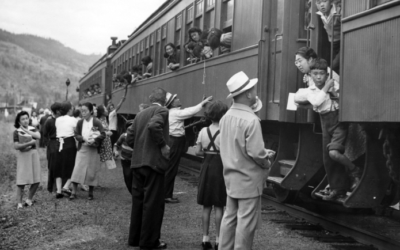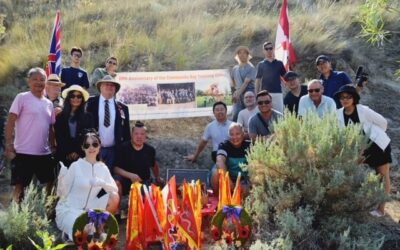[Header image: Fig. 1 BCD-U-767]
Jeannie’s cape is like an autograph book!
Imagine how many fascinating people you have met this year alone. What tokens of those encounters do you still have, apart from your memories? This collection of cloth badges from the Second World War reads like an autograph book. Badges, removed from the uniforms of the many British, Canadian and other allied forces men, were given to Nursing Orderly Jean “Jeannie” Daisy Amos. She sewed them inside her nursing cape [Fig. 1] while working at the 106 (British) General Hospital from September 1941 to December 1946 in Peebles, Scotland, Bayeux, France and Antwerp, Belgium. She wore the British Red Cross Society Voluntary Aid Detachment badge like this one on her uniform. [Fig. 2]
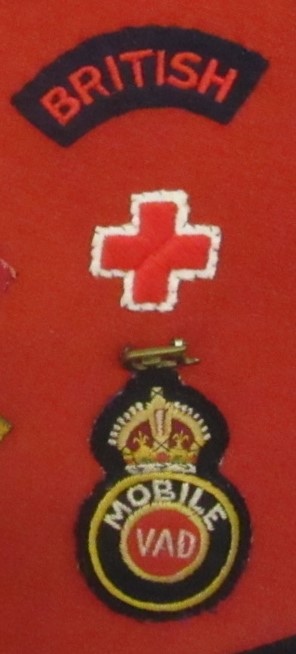
The badges include various formations of the British Army stationed in the UK with some unique designs. They also include many lettered shoulder flashes of Canadians who passed through during their training for the liberation of Europe. There are a few ranks, foreign badges and medal ribbons.
One badge [Fig. 3] is of a black and white penguin printed on cloth. Animals chosen for military unit insignia were usually tigers, lions, or something fierce and strong. What type of unit might choose a penguin? The British Army’s 22nd Beach Brigade did when it was formed in May 1945 in Troon, Scotland and disbanded in November 1945. They would manage landing craft and beach traffic operations if the British landed on the Japanese Home Islands in 1945. Penguins are awkward, flightless sea birds, much like the unit’s amphibious infantry landing craft that was used for beach invasions.
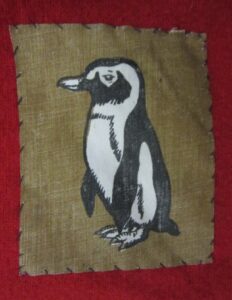
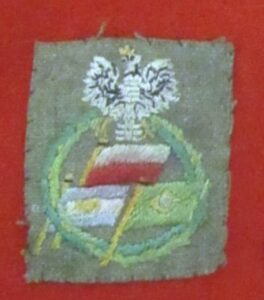
Another unique badge [Fig. 4] was the Polish Volunteers of South America Army/Air Force badge that incorporated the Flags of Argentina, Brazil and Poland to acknowledge members of the Polish diaspora coming to the UK to join the allied cause.
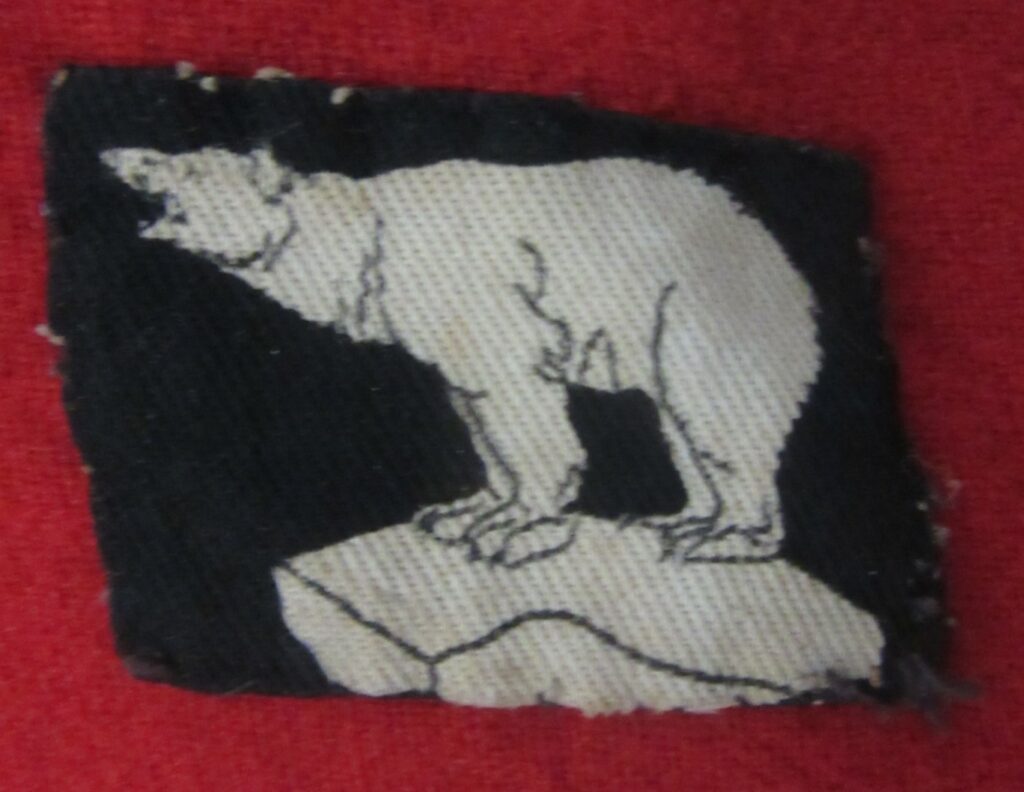
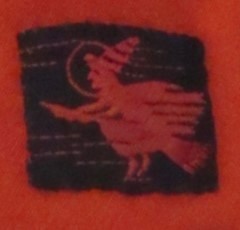
When the British 49th (West Riding) Infantry Division, a Territorial Army unit from Yorkshire, England, was posted to Norway in 1940, they adopted the polar bear for their formation badge [Fig. 5]. They were called The Polar Bears, Barker’s Bears or The Polar Bear Butchers. After the fall of Norway to German forces, they were sent to Iceland to deny access to the German Kriegsmarine of this strategic island in the North Atlantic. They were relieved by American troops in 1942 and later served in Normandy, France. A flying witch [Fig. 6] was chosen for the printed badge of the British Army’s 2nd Anti-Aircraft Division that defended British airspace with searchlights and cannons from 1935 to 1942, including during the Blitz. It might remind one of Harry Potter zipping around and casting spells on the fly on his Quidditch stick. The witch image might have been more suitable for a night-fighter Squadron attacking bombers in the sky.
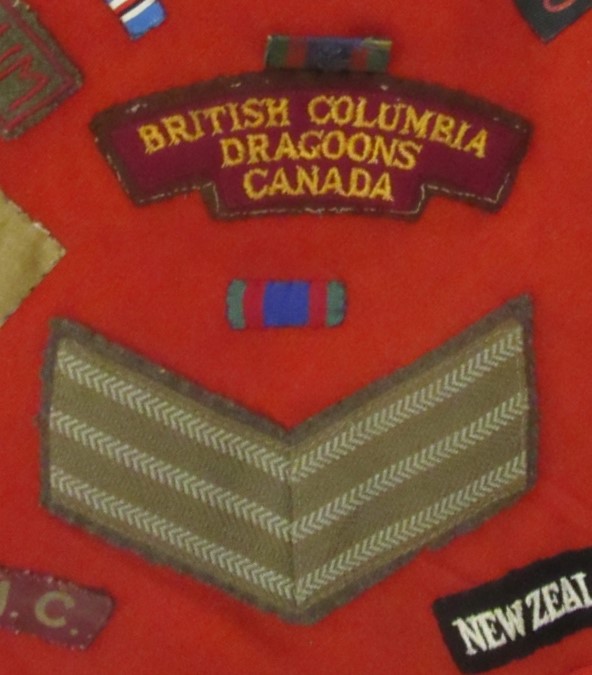
Fig. 7 shows the embroidered rank and unit cloth badges that may have come from Sergeant Eric G. Johnson, an Orderly Room clerk for the British Columbia Dragoons. These badges may mark when Eric and Jeannie met because the various printed badges on the cape were from more austere times, with fancier cloth badges arriving in 1945.
Post-war, Jeannie Amos joined Eric Johnson in Singapore, where they married in July 1948. Eventually, in 1956, they settled in Summerland, where Eric’s parents lived, to raise their family. After many years of community service, Jeannie and Eric Johnson died in Kelowna in 1999 and 1993, respectively.
Sources (accessed September 27, 2023):
https://www.cultmancollectables.com/shop-online/military-badges/formation-signs?page=2
https://wdmilitaria.co.uk/shop.php?c=16&pg=1
https://deadspartan.co.uk/shop.php?c=13&pg=24
https://www.britishbadgeforum.com/forums/showthread.php?t=67289
https://www.brittonsbadges.co.uk/en-GB/home-guard-badges/prodcat_1093?page=2

